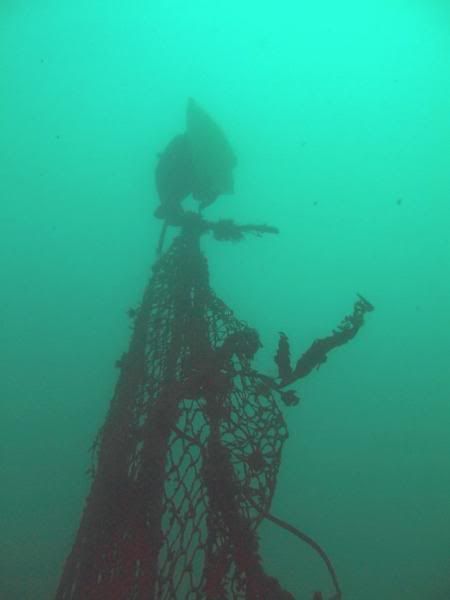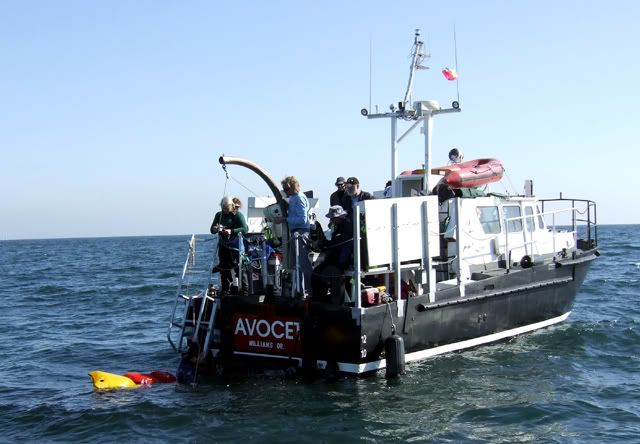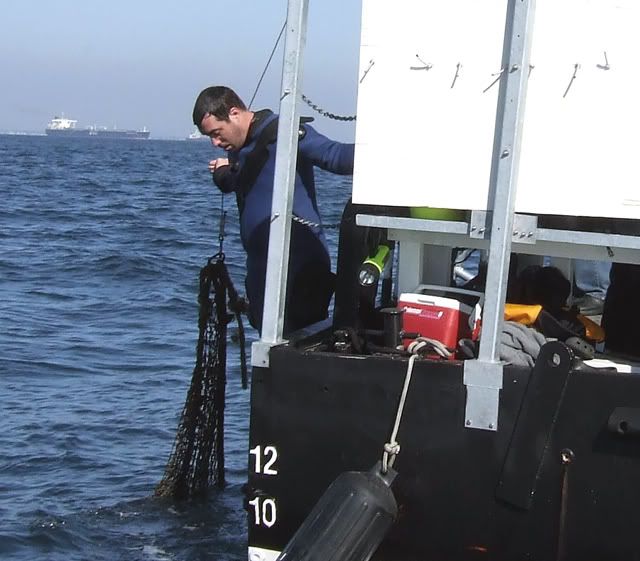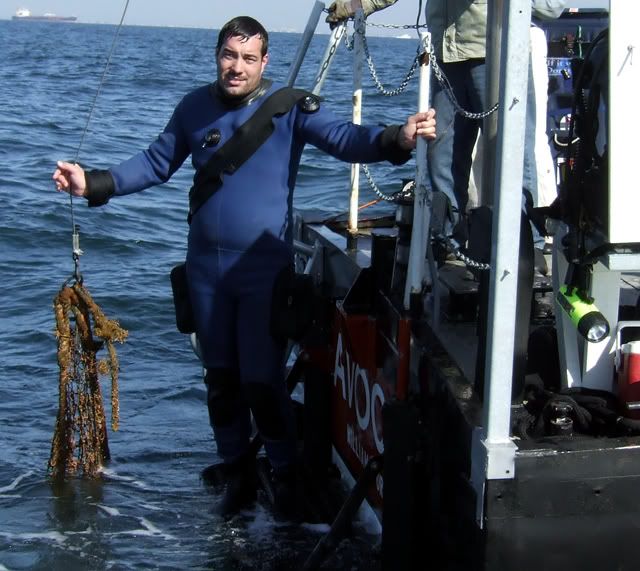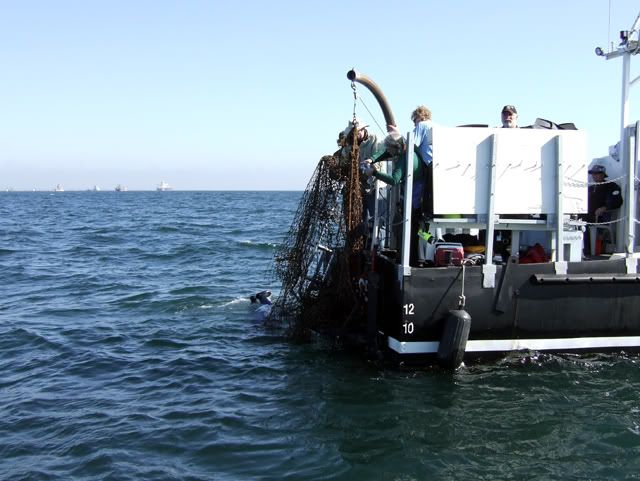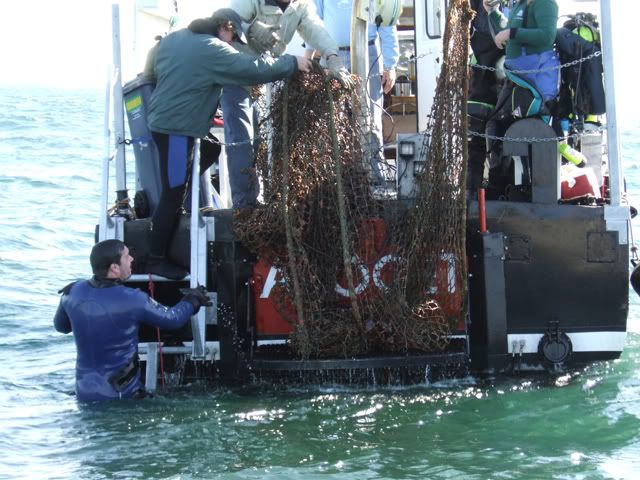Blackwood
Contributor
--- Note: the following is a repost. Original by LimeyX on divematrix ---








Mark Blackwood, Tobia Enhus, Ari Shofet and mysefl joined Kurt on the Clearwater today to try to remove some fishing nets from the Georgia Straights.
The wreck is in about 80 feet of water off of San Pedro. Kurt and his teams have worked it before, but it was the first time for us divers. We had a little bit of footage from previous dives to watch on the trip out to the site.
In all, we did two dives with about 50 mins bottom time on each dive.
This net is really embedded on the wreck, and you have to fight for every inch of it.
Vis was a decent 10-15 feet, rapidly dropping to zero as we started to cut.
We definitely need to rethink our tools.
We started off with Z-knives, but they just dont cut it (pun intended) for thicker net or bunched up net.
One of the more effective ways we found was to roll up a bunch of net into a "tube" and cut with a serrated knife.
Tobias and Marc spent a lot of effort cutting through some very thick rope which may have embedded metal. What are these fishermen thinking ?
In all, we only got around 30 pounds of net off, but it was not for trying.
A few shots.












